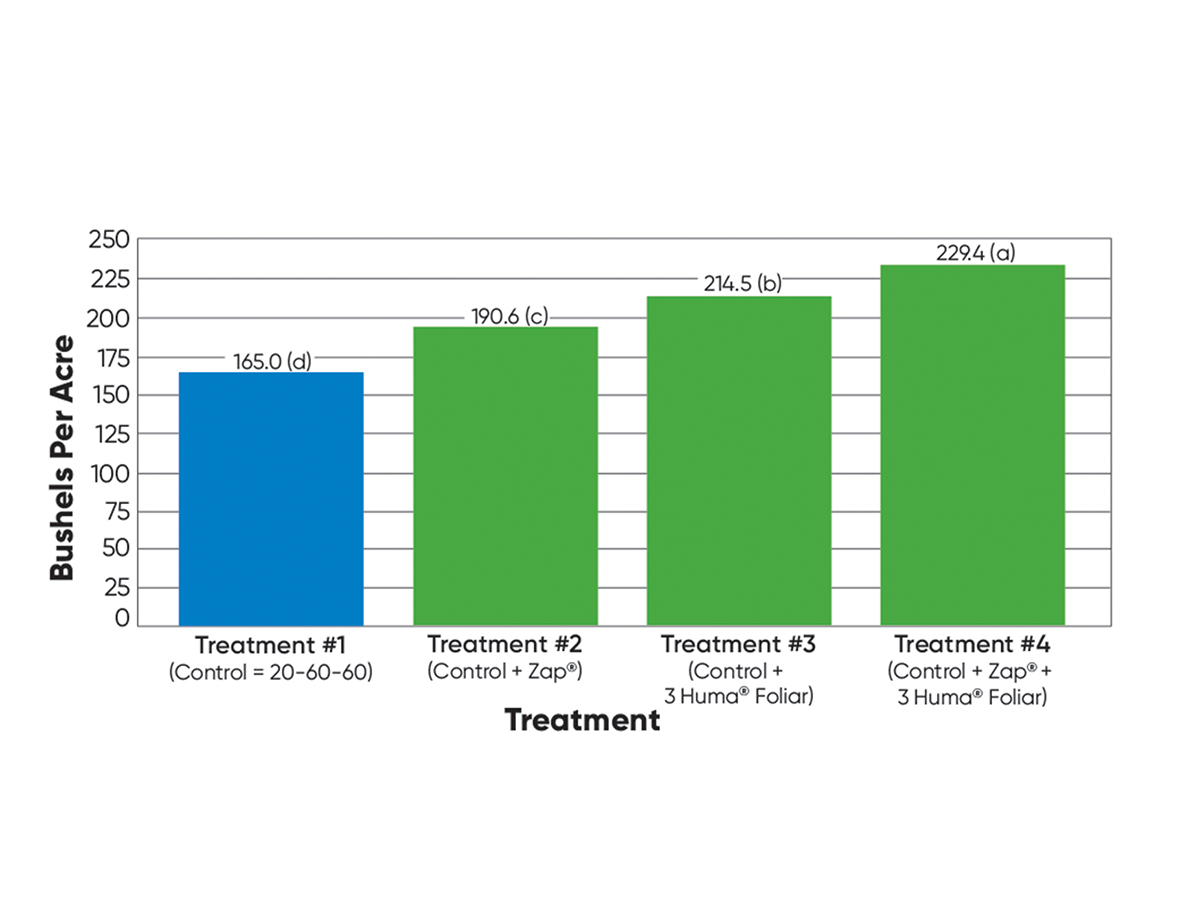Conducted by: Dr. K. Bruce Kirksey, AgriCenter International, Memphis, Tennessee
Huma Gro® Products: Jackpot®, Calcium, Super Potassium®, Zap®
OBJECTIVE
This field trial was conducted in order to compare sweet potato crop yields and return on investment (ROI) obtained when a Huma Gro® soil product (Zap®, for feeding soil biology and improving soil fertility) and 2 applications of 3 Huma Gro® foliar nutrients (Jackpot®, Calcium, and Super Potassium®) were applied in various combinations.
MATERIALS & METHODS
This trial on sweet potatoes (Ipomoea batatas, Var. Bueareguard) was conducted in Memphis, Tenn., in a randomized complete block study with 4 replications. The sweet potatoes were machine transplanted into conventional-till silt loam soil 12.6’ x 30’ plots. The sweet potatoes were planted on June 25.
Four treatment programs were compared: (Treatment 1) the grower’s standard preplant program of 20-60-60; (Treatment 2) the grower’s standard plus Huma Gro® Zap® applied in-furrow; (Treatment 3) the grower’s standard plus 3 Huma Gro® foliar-applied products—Jackpot®, Calcium, and Super Potassium®—applied at 30 days and again at 15 days prior to harvest; and (Treatment 4) the grower’s standard plus Huma Gro® Zap® plus 3 Huma Gro® foliar-applied products applied at 30 days and again at 15 days prior to harvest.
RESULTS

CONCLUSIONS
Micro Carbon Technology® in Huma Gro® soil and foliar products contributed to significant sweet potato yield and revenue increases in all three of the Huma Gro® treatments evaluated in this study. Though adding Huma Gro® products increased initial costs, the greater yields and net profits generated by the treatments resulted in a return on investment that paid for the cost and application of the Huma Gro® products many times over ($10–$12 dollars returned for every $1 spent).
Click here to download/view the report.
Related Posts

HUMA GRO® ZAP® CAULIFLOWER TEST FIELD IN SPAIN
Distributor: Huma Gro Hispaña HUMA GRO® application was ZAP® 5L/ha The cauliflower on the left was planted 3 weeks earlier than the cauliflower on the right, meaning the control is an older crop—although it looks worse for wear and is shorter. The two groups have equal nutrition programs: the difference is time and ZAP® at 5L/ha.

Nutrition-based Plant Growth Managers
Maximum Yield without Synthetic Hormones The HUMA GRO® plant growth managers are ideal for stimulating the plant to produce its own beneficial hormones naturally. This helps you deliver improved crop quality and yields, resulting in more uniform maturity and consistent size. The result is greater efficiency, productivity and profitability at harvest. Below are three featured


